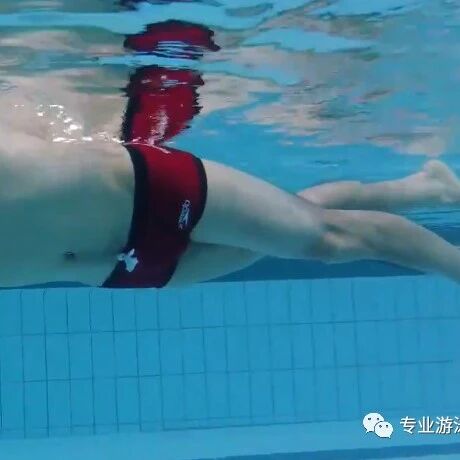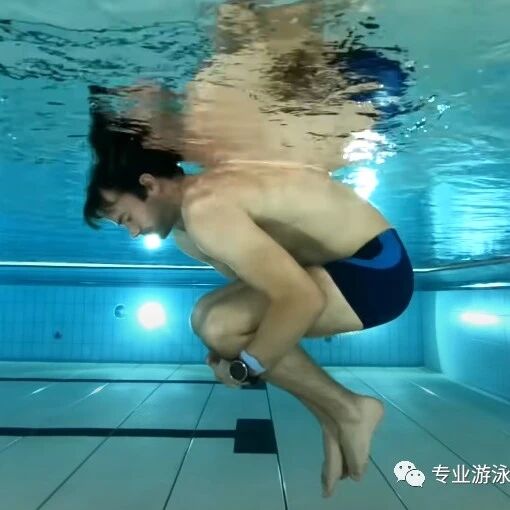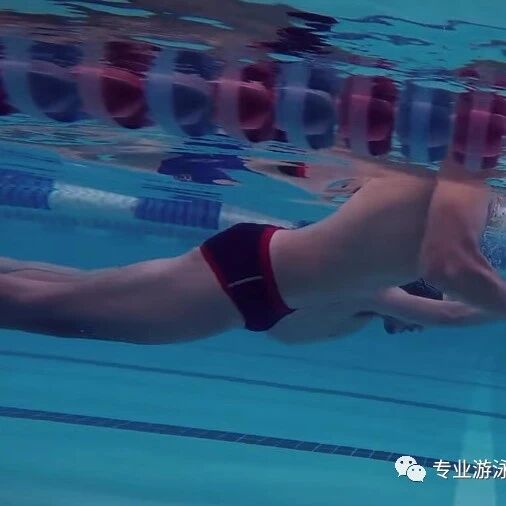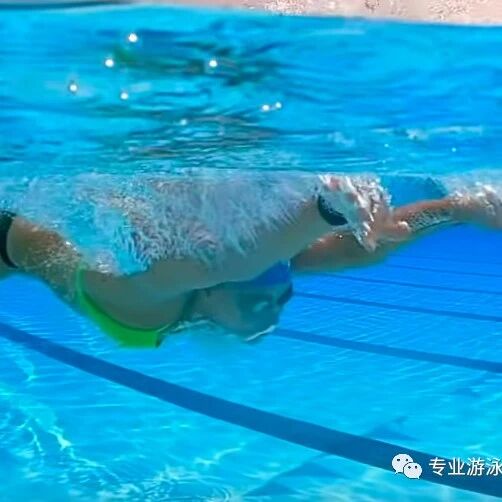As the swimming distance increases and swimming techniques become more refined, improving speed gradually becomes more challenging—indeed, even fine-tuning individual movement details yields diminishing returns in terms of overall speed enhancement. At this point, enhancing swimming performance can no longer rely solely on tweaking specific strokes; instead, swimmers must focus on their body posture as a whole during the swim. By filming themselves underwater, they can analyze the rhythm and fluidity of their movements, identifying any postural misalignments, technical nuances, or breathing patterns that might be hindering smooth, efficient strokes.
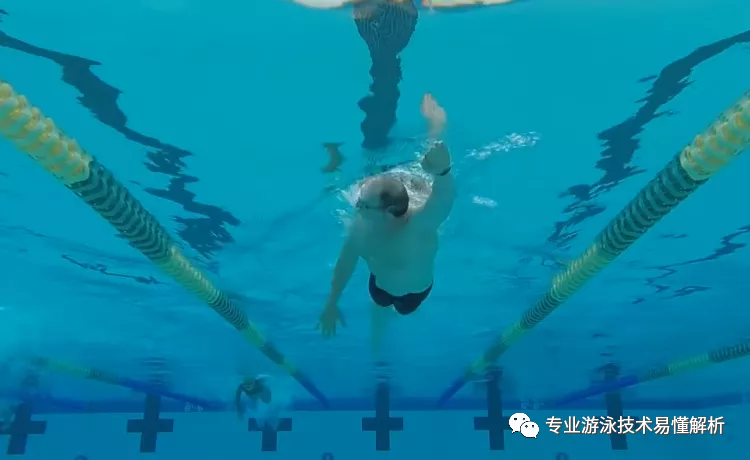
During the learning process, one realization becomes increasingly clear: the proper use of the hips. When first learning to swim, kicking naturally causes the hips to swing along with it. But once you develop a stronger awareness of your core muscles—by engaging and stabilizing your core—the hip movement gradually fades, shifting instead into an iliac rotation that becomes a key component of your body’s lateral turns. As kicking technique improves, the hips ultimately take center stage, no longer relying on leg movements to initiate hip rotation—but instead, the hip rotation itself drives the kicking motion. This is a continuous journey toward mastering hip engagement in swimming. This article shares insights and experiences from this process.1. The hip is to the leg what the shoulder is to the arm.The hip joint is clearly not as flexible as the shoulder joint. Swimmers with some experience know that no matter how strong your arm-stroke power may be, it won’t translate into efficient forward motion unless you engage the shoulder joint in a coordinated, fluid motion. By activating the larger muscle groups in your shoulders and upper back—thanks to the seamless connection between your arms and shoulders—you can prevent arm fatigue, making each stroke feel smoother, more effortless, and significantly more effective. As a result, your overall swimming efficiency improves dramatically.Similarly, simply relying on calf power to kick or using thigh strength for whip-like leg movements will only yield limited swimming efficiency. However, once you realize that your hips and legs can work in harmony—activating the gluteal muscles—you’ll see a dramatic improvement in your kicking technique and overall swimming performance.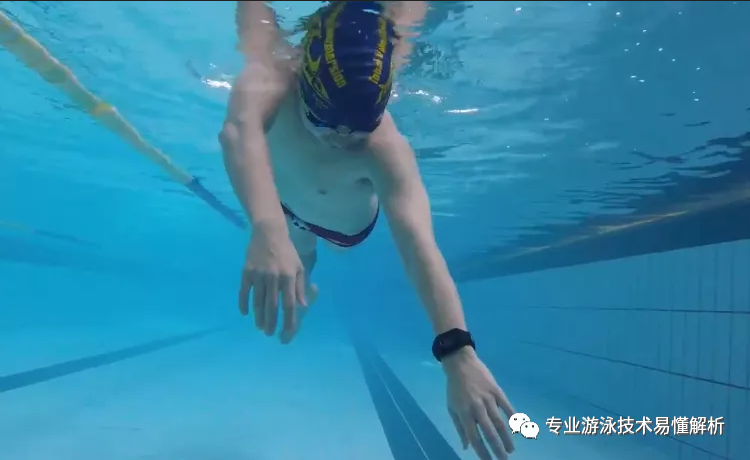
2. The pushing motion should gradually move closer to the hips.It’s unclear whether it’s influenced by the wide-track arm movement, but many swimmers find their underwater techniques easily affected by their on-water strokes. Swimmers who execute wide, sweeping arm movements above water tend to naturally mimic that same motion when pushing off underwater—often resulting in an overextended, inefficient "wide-track" push. Yet, this common mistake is surprisingly overlooked by many swimmers.Indeed, the body naturally rotates laterally as the arms push through the water—but this shouldn’t be seen as a reason to move the arms farther away from the body. In fact, this wide-track propulsion technique is flawed, as it actually undermines the arm’s ability to effectively channel and block the water against the body. As a result, the resistance encountered during the push becomes significantly reduced, making the stroke feel noticeably easier with each repetition. This can inadvertently lead swimmers to mistakenly believe that accelerating their pace requires minimal effort—when in reality, they’re simply benefiting from less drag.In fact, the arm-push motion begins with the arm extended vertically downward toward the pool floor, initiated by a side rotation of the body. The arm follows a path that moves diagonally backward and slightly inward from directly beneath the body before the rotation—precisely because the body’s lateral twist creates the ideal space for this powerful, efficient stroke. Yet, many swimmers instead push the water along the side of their body as if lying flat, leaving the space generated by the body’s natural pivot completely unused. As a result, their arms remain consistently distanced from the torso throughout the push, which is precisely why the effectiveness of the stroke is severely compromised.
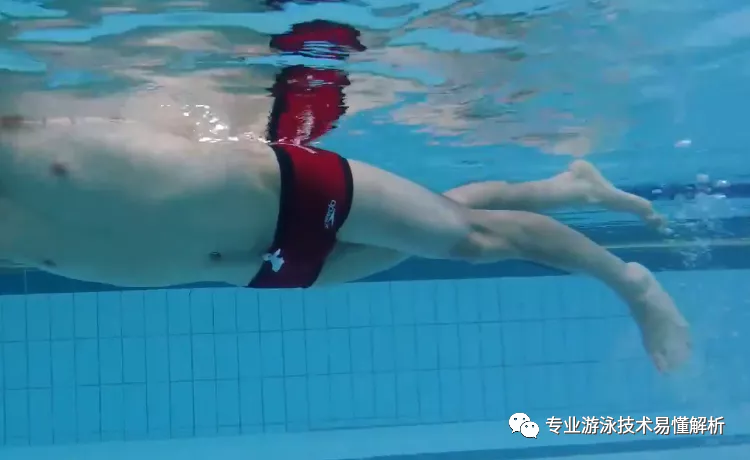
3. Stability in hip positioning is the foundation for further improving swimming speed.
Regardless of the swimming stroke, stable hip positioning is one of the key indicators of a swimmer's technical proficiency. In breaststroke, maintaining consistent hip stability ensures the optimal coordination between the powerful frog kick and the efficient arm movements, significantly reducing unnecessary energy expenditure caused by water resistance. Meanwhile, in freestyle, keeping the hips steady allows the swimmer to maintain a higher hip position—closer to the water’s surface—making the stroke feel much easier. This also enhances the ability to engage the glutes effectively, enabling a powerful whip-like kick that further improves propulsion and overall swimming efficiency.
However, stability shouldn’t be interpreted rigidly. Stability doesn’t mean standing still—it means maintaining the buildup of power without letting it dissipate or become scattered. During a short-distance sprint, keeping the hips steady is crucial; only with this stability can you provide the necessary support for the rapid arm swings at the shoulder joint. It’s like a three-wheeled vehicle—only when the rear wheel remains stable can the front two wheels maintain their incredible speed and agility. Similarly, in long-distance swimming, actively rotating the hips and fully engaging the gluteal muscles can significantly reduce the workload on the arms, allowing for a more efficient, rhythmic stroke pattern that enhances overall forward propulsion.
